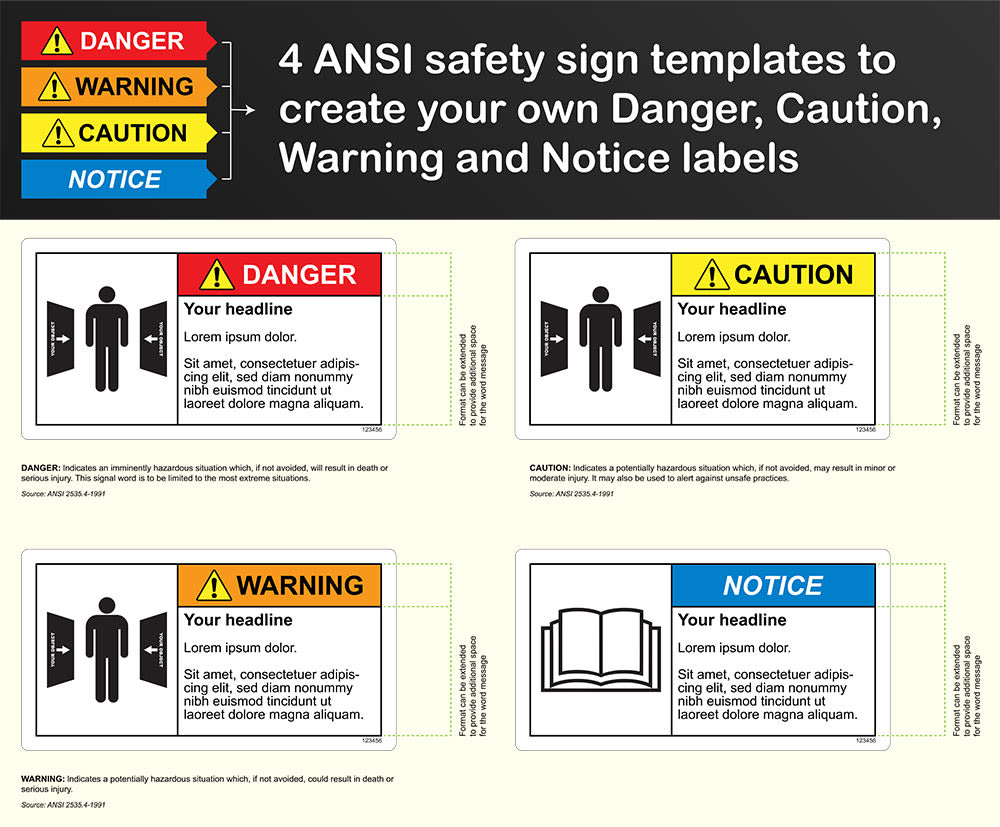
ANSI color codes help identify hazards and safety equipment. Red, orange, and yellow signal dangers, green indicates safety and first aid, while blue denotes non-critical information.
The ANSI
ANSI is a nonprofit that coordinates U.S. voluntary standards, representing over 270,000 organizations and 30 million professionals.
One of the ways it has worked to achieve its goals is through ANSI Z535.1-2011, more easily remembered as the American National Standard for Safety Colors. This is a collection of colors with a set of intended meanings meant to be easily distinguished from one another.
ANSI specifies safety colors with precise ink formulations and corresponding PANTONE® references:
Red: PANTONE 186 C.
Orange: PANTONE 151 C.
Yellow: PANTONE 109 C.
Green: PANTONE 335 C.
Blue: PANTONE 285 C.
Purple: PANTONE 259 C.
Common Use Cases
ANSI’s safety colors don’t have singular meanings. Rather, each color defines a group of potential meanings, allowing a person to determine, at a glance, how noteworthy the sign or warning is and often, through context, better understand the purpose of the sign or warning.
The common use cases for these different colors are as follows:
Red
Red signals critical safety equipment and significant dangers, marking stop buttons, fire equipment, flammable liquid containers, and barricade lights.
Orange
Orange marks areas with potential hazards, often machinery or energized equipment, where caution is required due to moving parts or hot surfaces.
Yellow
Yellow represents specific hazards and generally designates that one should be cautious in a given area. It marks falling, tripping and striking hazards and more.
Green
Green indicates safety and emergency equipment; like first aid kits, eyewash stations, exits, and muster points.
Blue
Blue communicates non-safety information, such as out-of-order signs or general instructions, and serves an administrative role.
Purple
Purple is used to indicate radiation hazards and is typically found on warning signs, tags, or labels for radioactive materials.
Conclusion
In many industries, understanding ANSI color codes should be considered essential. It helps individuals immediately recognize what to pay attention to. These colors are also a standard adopted across the U.S., it’s helpful to understand these colors in general, not just as related to your specific industry.
At Alsco Uniforms, we can help you stay in compliance with both ANSI/ISEA standards as well as OSHA standards. If you want to learn more, read about our health and safety services. We can make sure your team has flame-resistant uniforms, high-visibility clothing, first aid cabinets and other materials that meet OSHA and ANSI/ISEA standards. Reach out to us today to learn more.
References
About ANSI. American National Standards Institute Inc.
American National Standard for Safety Colors. (October 2017). American National Standards Institute Inc.
What Are ANSI Color Codes? Brimar Industries LLC.
ANSI Z535.1 — Safety Colors in Focus. (July 2023). Same Page Publishing.
